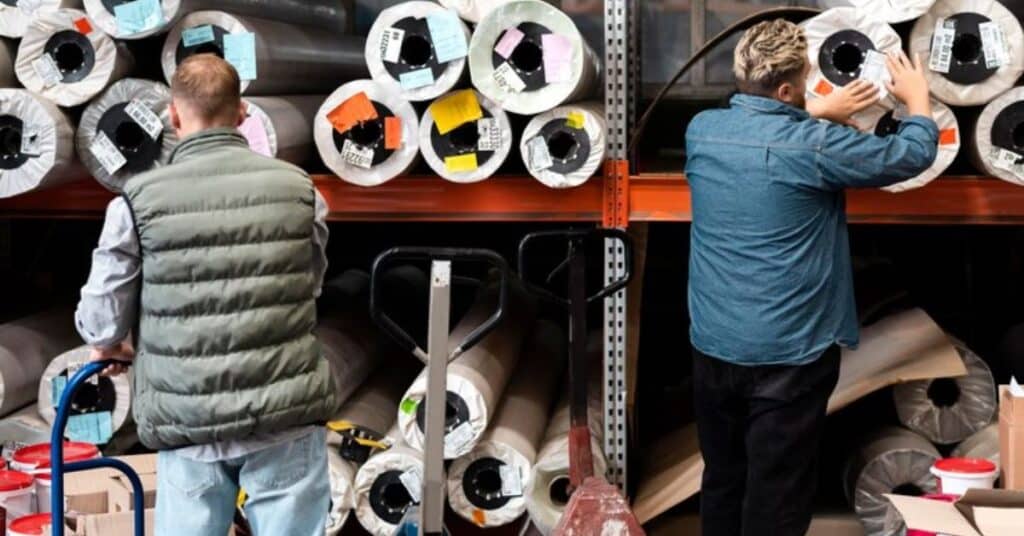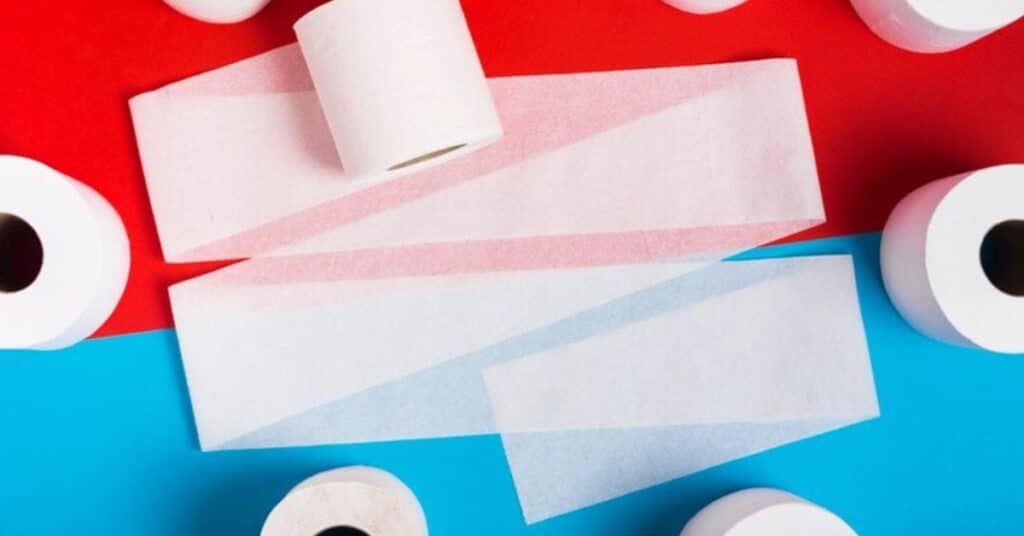Paper towels are absorbent because they are made of fibers. These fibers have tiny spaces between them. When liquid touches the towel it spreads out and gets trapped in these spaces. This makes the towel soak up the liquid quickly. That’s why paper towels are good at cleaning up spills.
Paper towels excel in absorbing liquids due to their unique structure. Unlike regular towels they are made of small fibers with tiny gaps between them. When liquid comes into contact with a paper towel it quickly spreads out and is absorbed into these spaces. This quality makes paper towels highly effective for cleaning up spills and messes.
The absorbency of paper towels comes from their unique design. Made of tiny fibers with gaps between them paper towels quickly soak up liquid. When liquid touches the towel it spreads out and is absorbed into these spaces. This is why paper towels are more absorbent compared to other materials.
Type of Materials Used in Paper Towel Production
Paper towels are usually made from wood pulp or recycled paper. Wood pulp comes from trees which are broken down into fibers. These fibers are then processed to create the paper towels we use.

Recycled paper on the other hand, is paper that has been used before and then recycled. It undergoes a similar process of breaking down into fibers and turning into paper towels. Both types of materials contribute to the production of paper towels, offering options for environmental sustainability and resource conservation.
What Does Differentiate Paper Towel?
Paper towels differ based on their absorbency strength and thickness. Absorbency refers to how well they soak up liquids making them efficient for cleaning spills. Strength is important to prevent tearing or breaking especially when wet.
The thickness of a paper towel affects both absorbency and strength. Thicker towels tend to be more absorbent and durable. Manufacturers use various materials and techniques to create paper towels with different levels of absorbency strength and thickness to meet diverse consumer needs.
Creping and Embossing Paper Towels
Creping and embossing are two important processes in making paper towels. Creping involves stretching and crinkling the paper during production. This creates tiny spaces between the fibers attractive the towel’s absorbency and flexibility.
Embossing adds patterns or textures to the paper towel surface. These patterns help to increase the surface area of the towel improving its ability to absorb liquids effectively. Together creping and embossing contribute to making paper towels more absorbent and efficient for everyday use.
How Paper Towels Are Different From Other Papers
Paper towels differ from other papers primarily in their composition and purpose. Unlike regular paper which is typically smooth and dense paper towels are designed to be more absorbent and durable.
The fibers used in paper towels are longer and more porous allowing them to absorb liquids quickly and efficiently. Paper towels undergo special processes like creping and embossing to improve their absorbency and strength.

These characteristics make paper towels ideal for tasks such as cleaning spills, wiping surfaces and absorbing moisture distinguishing them from other types of paper used for writing or printing.
Related Content: What Is The Difference Between Paper Towels And Tissue Paper?
What Factors Affect Paper Towel Absorbency
Several factors influence paper towel absorbency. The density and composition of the fibers play a crucial role. The surface area and texture of the towel affect how well it can soak up liquids. These aspects collectively determine why paper towels are more absorbent than other materials.
How Paper Towels Can Help You Clean Up Spills
Paper towels are excellent for cleaning spills due to their absorbency. When a spill occurs simply place a paper towel over it to soak up the liquid quickly. Press down gently to ensure maximum absorption.
Paper Towel Usage Statistics
Paper towel usage statistics reveal their widespread popularity. They are extensively used in households, restaurants and public facilities. The demand for paper towels continues to grow due to their convenience and versatility.

Paper towels and toilet paper
Paper towels and toilet paper are two essential paper products in daily life. Paper towels are primarily used for cleaning tasks such as wiping spills and drying hands.
They are designed to be absorbent and durable making them suitable for various cleaning purposes. On the other hand toilet paper is specifically designed for personal hygiene after using the restroom.
It is softer and more delicate than paper towels to ensure comfort during use. Both paper towels and toilet paper play important roles in maintaining cleanliness and hygiene in households and public facilities.
Paper towel vs toilet paper
| Paper Towel | Toilet Paper |
| Used for cleaning spills, drying hands, and general cleaning tasks | Used for personal hygiene after using the restroom |
| Typically thicker and more absorbent | Generally softer and more delicate |
| Designed to be strong and durable | Designed to dissolve easily in water |
| Comes in larger sheets or rolls | Comes in smaller sheets or rolls |
| Often embossed for added texture and absorbency | May be quilted or layered for extra softness |
Which paper towel is more absorbent science project
In the science project about the absorbency of paper towels, various brands are tested to determine which one absorbs the most liquid. Each brand is cut into equal-sized pieces and placed in identical conditions.
A controlled amount of water is poured onto each piece of paper towel, and the amount of water absorbed is measured using a graduated cylinder or another measuring tool. The brand that absorbs the most water is identified as the most absorbent in the experiment.
By conducting this science project students learn about the scientific method and how to conduct experiments to test hypotheses. They also gain insights into the properties of different paper towel brands and their absorbency levels.
Paper towel absorbency science experiment
In the paper towel absorbency science experiment students investigate how different factors affect the absorbency of paper towels. They start by selecting various brands or types of paper towels to test.
Students measure equal amounts of water and pour them onto each paper towel sample. They observe and record how quickly each towel absorbs the water and how much liquid it can hold.
Through this experiment students learn about variables such as paper towel thickness, texture and composition that influence absorbency. They analyze their findings to conclude about which paper towel is the most absorbent and understand the scientific principles behind absorbency.
Frequently Asked Questions
What makes paper towels more absorbent than other materials?
Paper towels are more absorbent due to their composition of long fibers and porous structure. These fibers and spaces between them allow the towels to quickly soak up liquids.
How do paper towels compare to cloth towels in absorbency?
Paper towels generally have superior absorbency compared to cloth towels. The fibers in paper towels are designed to absorb and hold liquid more effectively than the fibers in cloth towels.
Can the absorbency of paper towels vary between brands?
Yes, the absorbency of paper towels can vary depending on the brand, thickness and quality of the materials used. Some brands may be more absorbent than others due to differences in their manufacturing processes and materials.
What paper towel is the most absorbent?
The absorbency of paper towels can vary depending on factors like thickness, texture and material. Conducting a simple absorbency test with different brands can determine which paper towel absorbs the most liquid.
What makes towels absorbent?
Towels are absorbent due to their porous structure and the material they are made of.
Conclusion
The absorbency of paper towels stems from their unique composition and structure. Made of long fibers with porous spaces between them, paper towels can quickly soak up liquids. This design allows them to be highly effective in cleaning up spills and messes.
Overall why paper towels are more absorbent helps us appreciate their importance in daily tasks. Their ability to efficiently absorb liquid makes them a convenient and practical choice for various cleaning needs.

Warner Clips is an expert writer with 4 years of experience crafting engaging content on Home topics. My expertise ranges from creating cozy environments to tackling Home Improvement projects. Find my work in publications like Huffington Post and Reader’s Digest.







